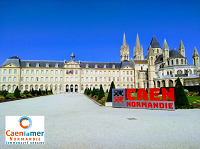Présidents de session
Theory of supernovae, neutron stars, and neutron star mergers
- Pawel Danielewicz (Michigan State University)
Theory of supernovae, neutron stars, and neutron star mergers
- Giuseppina Fiorella Burgio
In my talk I will review the role of hyperons on the properties of neutron stars, discussing the so-called “hyperon puzzle”. I will revise some of the solutions proposed to solve it, and discuss its implications with respect to the most recent measurements of unusually high neutron star masses.
I will present two recent analyses of nuclear data, i.e. flow data from heavy ion collision (HIC) and giant monopole resonances (GMR). These data provide constraints to nuclear matter with an equal number of neutrons and protons. To do so, the model for dense nuclear matter equation of state (EoS) is enriched in order to be sensible to properties close to saturation density, i.e. the curvature...
Given an Equation of State (EOS) for neutron star (NS) matter, there is a unique mass– radius sequence characterized by a maximum mass Mmax at radius Rmax. We first show analytically that the Mmax and Rmax scale linearly with two different combinations of the NS central pressure and energy density, by dissecting perturbatively the dimensionless Tolman–Oppenheimer–Volkoff (TOV) equations...
A number of phenomena and signals from compact stars involve transport phenomena in nuclear matter at densities below saturation, where matter is known to be clusterized. This concerns core-collapse supernova dynamics at high temperature, where matter is in a liquid phase and the energy transport is ruled by the interaction of neutrinos with the different nuclear species, but also the...
We investigate the probable existence of dark matter in the interior of neutron stars.
Despite the current state of knowledge, the observational properties of neutron stars have not definitively ruled out the possibility of dark matter. Our research endeavors to shed light on this intriguing mystery by examining how certain neutron star properties, including mass, radius, and tidal...
$\chi$EFT is a powerful framework to construct models for the equation of state of low-density neutron star (NS) matter. However, there are currently only limited probes of NS matter that can reliably be used to test $\chi$EFT and the models it produces. While constraints on bulk NS properties can be inferred from various observables, these properties are mainly sensitive to the NS core, where...

